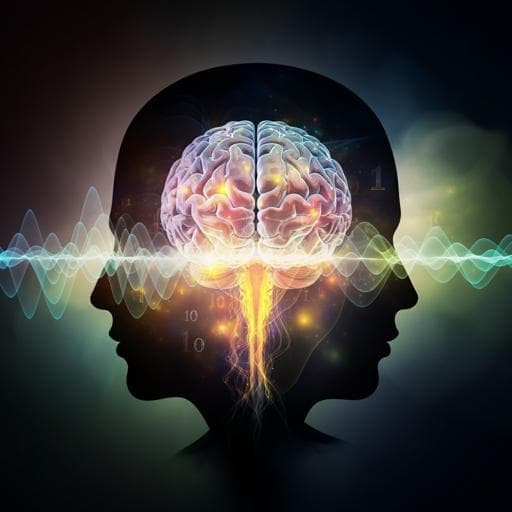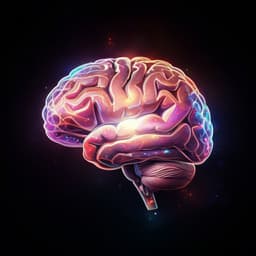
Psychology
Processing of pragmatic communication in ASD: a video-based brain imaging study
A. Kotila, A. Hyvärinen, et al.
This study explores the neural processing of pragmatic communication in young adults with Autism Spectrum Disorder (ASD) using fMRI technology. It uncovers intriguing challenges in interpreting multimodal cues during complex social situations for the ASD group, conducted by a team of researchers from esteemed institutions.
~3 min • Beginner • English
Introduction
Everyday communication demands flexible integration of dynamic verbal, non-verbal, and contextual cues to draw pragmatic inferences. Individuals with autism spectrum disorder (ASD) characteristically have difficulties in social communication, including pragmatic aspects, which can persist into adulthood. Prior work has focused largely on children and rarely on multi-level contextual processing that requires directing attention, monitoring, and integrating multiple simultaneous cues. Neural models implicate large-scale networks such as the salience network (insula and anterior cingulate cortex) and the default mode network (DMN) in social and pragmatic processing. ASD has been linked to atypical activation and connectivity in these networks. Naturalistic movies can better capture real-life pragmatic demands than static or simplified stimuli and improve engagement during fMRI. Research questions: (1) Do social brain network components show different temporal responses in young adults with ASD versus neurotypical (NT) controls during complex socio-pragmatic movie scenes? (2) If differences occur, what pragmatic and social interaction features characterize the evoking events? The authors hypothesized that socio-communicative difficulties in ASD would manifest as differential brain network responses during pragmatically demanding moments.
Literature Review
Earlier theories suggested right-hemisphere dominance for pragmatics, but fMRI work emphasizes distributed networks, notably the salience network (insula, anterior cingulate) for salient event detection, mental state attribution, and switching between cognitive resources, and the DMN for social inference and understanding others. ASD has been associated with atypical salience network and DMN connectivity and activation, including dysfunctional anterior insula and anterior cingulate contributions to social decision-making and tracking others’ motivation. Behavioral studies indicate diminished capability to comprehend rapidly changing socially salient cues, poor cognitive flexibility affecting context use, and impairments in perceiving facial valence and communicative gestures, predicting/inferencing from others’ actions, and perspective taking (allocentric stance). Naturalistic movie paradigms reveal synchronized hemodynamic responses across viewers and provide reliable network measures, with prior ASD studies showing altered network dynamics and reduced synchronization during social interactions. Cross-modal integration deficits (speech-gesture) and difficulties with ironic/sincere language have also been reported in ASD, supporting expected neural differences during pragmatic load.
Methodology
Design: fMRI movie-watching study comparing ASD and NT groups on temporal responses of social/pragmatic brain network components, with subsequent qualitative analysis of pragmatics in scenes showing group differences.
Participants: 19 young adults with ASD (5 female, 14 male; mean age 23.6, SD 3.3, range 19–31) diagnosed in childhood (ICD-10; ADI-R, ADOS, multiprofessional team). Nineteen NT controls (4 female, 15 male; mean age 22.7, SD 2.2, range 19–29) without neurodevelopmental disorders. Cognitive assessment (WAIS-IV GAI) showed no significant group differences (ASD M=111.3, SD=13.2; Controls M=103.7, SD=13.0; p=0.130). VCI and PRI also nonsignificant. Autism Quotient differed (ASD n=17: M=19.7, SD=9.0; Controls n=16: M=10.6, SD=4.9; p=0.002), consistent with ASD features in the ASD group. Ethics approval and informed consent obtained.
Stimuli: Seven concatenated video clips (50–84 s each) from the Finnish TV series Ruusun aika (1990–1991) depicting naturalistic family social interactions selected for pragmatic content requiring advanced inferencing and complex verbal/non-verbal cue integration. Pre-assessed by 45 university students using a pragmatics-focused multiple-choice questionnaire to validate contextual content.
MRI acquisition: Siemens Skyra 3T, 32-channel. BOLD EPI: TR=2150 ms, TE=28 ms, flip angle=15°, voxel 3×3×3 mm³, matrix 64×64, 45 axial slices, 224 volumes (covering all clips). T1 MPRAGE: TR=1900 ms, TE=2.49 ms, TI=900 ms, flip angle=9°, FOV=240 mm, 0.9 mm isotropic.
Preprocessing: FSL pipeline with high-pass filter (0.008 Hz), motion correction, brain extraction, spatial smoothing (5 mm FWHM), registration to MNI152 using T1. No group differences in head motion (relative U=203, p=0.525; absolute U=192, p=0.751).
Independent component analysis: Group ICA (FSL MELODIC) on control group data decomposed into 70 components. Dual regression obtained subject-level spatial maps and timecourses. Three components selected based on spatial patterns and relevance to social/pragmatic processing: IC4 (bilateral insula, left opercular cortex, anterior cingulate), IC15 (anterior cingulate, right insula, bilateral inferior frontal gyrus, bilateral primary auditory cortex; overlapping salience and anterior DMN regions), IC27 (bilateral insula, paracingulate). Permutation testing (5000 permutations) showed no significant spatial map differences between groups for selected ICs.
Timecourse analysis: For each participant, IC timecourses were normalized (mean=0, range −1 to 1). Group-mean timecourses computed per timepoint for ASD (x_k) and NT (y_k) for each IC (k=1..3). At each timepoint, group difference p-values via permutation test (10,000 permutations). Fisher’s combined probability test across ICs per timepoint; Benjamini–Hochberg FDR (q=0.05) applied across timepoints within each clip to control multiple comparisons.
Qualitative pragmatic analysis: For timepoints with significant group differences, events in the corresponding clips were analyzed by three clinical pragmatics researchers, aligning scene timing with BOLD latency to characterize communicative demands (verbal vs non-verbal, perspective shifting, overlapping events).
Key Findings
- Overall similarity: Average timecourses of IC4, IC15, and IC27 were predominantly similar between ASD and NT groups across seven clips.
- Significant differences: After combining probabilities across ICs and FDR correction, significant group differences occurred at specific timepoints:
• Clip 2: timepoint 60, χ²(6)=24.10, p<0.001.
• Clip 4: timepoints 104 and 105, χ²(6)=20.34, p=0.002 and χ²(6)=20.50, p=0.002.
- No significant differences in clips 1, 3, 5, 6, or 7 after correction.
- Pragmatic characterization of differing moments: In both clips 2 and 4, two overlapping communication events occurred concurrently—one verbal (dialogue or monologue) and one non-verbal (gesture/gaze)—requiring attention shifting and perspective taking between parallel communicative streams. Other clips lacked such parallel events.
- Network loci: Differences involved components centered on salience network regions (bilateral insula, anterior cingulate) with overlap into anterior DMN-related areas (IC15).
Discussion
Findings address the hypothesis that socio-pragmatic difficulties in ASD manifest at the neural level during complex communicative demands. While most scenes elicited similar social brain network dynamics in ASD and NT groups, specific moments involving concurrent verbal and non-verbal communication and the need for perspective shifting revealed atypical responses in ASD within salience-network-related components. This pattern aligns with literature linking ASD to atypical salience network dynamics, increased effort for highly communicative cues, reduced social attention under higher pragmatic load, and deficits in cross-modal integration and perspective taking. The results suggest that when pragmatic processing load is elevated by overlapping contextual cues, individuals with ASD may experience challenges in dynamically reallocating attention and integrating multimodal social information, leading to altered temporal profiles in salience/DMN-related components. The absence of widespread differences likely reflects the relatively high cognitive abilities and mild symptom profiles of participants and the constrained scene framing, indicating that deficits become most apparent under peak pragmatic demands.
Conclusion
This fMRI study using naturalistic movie clips found that young adults with ASD generally showed similar social brain network timecourses as controls but exhibited significant differences during moments with concurrent verbal and non-verbal communication requiring perspective shifts. These differences localized to salience-network-related components (insula, anterior cingulate) with overlap into anterior DMN regions and likely reflect challenges in integrating multimodal pragmatic cues under high processing load. Implications include tailoring interventions to support attention shifting and multimodal cue integration in complex social settings. Future research should confirm adult diagnoses, increase sample sizes, utilize faster fMRI for improved temporal precision, design stimuli with systematically varied pragmatic load (including VR-based naturalistic environments), and examine broader ASD phenotypes to assess generalizability.
Limitations
- ASD diagnoses established in childhood were not reconfirmed in adulthood.
- Modest sample size (n=19 per group) limits power and generalizability.
- BOLD fMRI temporal resolution and latency constrain precise event-aligned interpretation; fast fMRI could improve temporal accuracy.
- Participants had relatively high cognitive abilities and mild profiles, potentially reducing observable differences.
- Video framing focused on main characters, which may have simplified attention demands compared to real-world scenes.
- Naturalistic stimuli preclude strict experimental control over all contextual variables.
Related Publications
Explore these studies to deepen your understanding of the subject.







